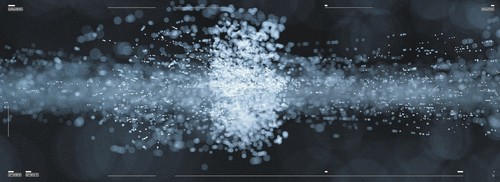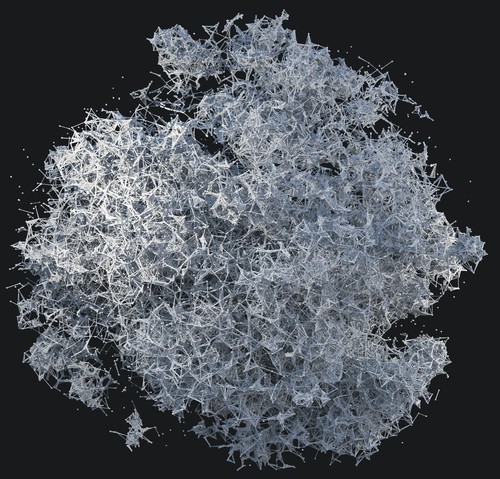In Istanbul's art scene this year, works devoted to helixes and data sculptures became the center of attention. The opening exhibition at the re-opened Yapı Kredi Art Center, "Helix," and Refik Anadol's numerous installations attracted people to Istanbul's art spaces. Last week, I came across a new installation by Anadol at the entrance of ANAMED's exhibition space on İstiklal Avenue. "Çatalhöyük Research Project Archive," a video wall installation, uses machine learning algorithms and visualizes an archive of 2.8 million data records.
"We first started to talk about this back in December 2016," Şeyda Çetin, the coordinator and content developer of the project, said in an interview last week.
"The Çatalhöyük Research Project team was fascinated by this idea from the very beginning. Once we got the support from all parties, I started mediating a team of experts. They carried out an intercontinental and inter-temporal work."
The main challenge for the team was to transport an enormous database from Konya to Los Angeles where Anadol's studio is located.
"We needed to wait for the excavation season to start at Çatalhöyük in May 2017," Çetin said. "Another important aspect was having the technical support to start developing this site-specific installation. The research and development team at Arçelik collaborated with the artist intensely to get the best image quality. I must say, the artist in the first place, and actually everybody involved in this project are enthusiasts of investigating and experimentation. 'The Curious Case of Çatalhöyük' utilized one of the first examples of virtual reality and artificial intelligence transcending research, archaeology, art, and technology within an exhibition. Yet, these digital applications provided a glimpse at opportunities they would offer in the future to researchers and experts in the field of cultural heritage."

"The Çatalhöyük Research Project Archive," a video wall installation, uses machine learning algorithms and visualizes an archive of 2.8 million data records.
With "The Curious Case of Çatalhöyük" exhibition, the ANAMED team wanted to put on view an interdisciplinary approach of archaeological research; a key feature of their research was the database of the Çatalhöyük Research Project.
The archive, with 2.8 million data records that describe 250,000 finds, was massive. The records corresponded to discoveries made in the past 25 years by scientists.
"We had many discussions with our curator Duygu Tarkan and our exhibition designer Cem Kozar," Çetin said. "The data archive itself contains its own research questions within it. We wanted to investigate the ways to visualize this massive research-centered database in the exhibition and Refik Anadol's approach re-interpreting databases was something we would like to investigate more. On the other hand, for the exhibition we wanted to collaborate with artists to underline how the site has been subject to various artworks and offers new perspectives to archaeological research at Çatalhöyük."
The ANAMED team gave Anadol an enormous database with terabytes of data, with no guidance in terms of conceptual framework.
"We were expecting it to be aesthetic but also an artwork that will open up new questions for the research. In a sense, he made an archaeological excavation by digging the archive himself," Çetin said.

The archive, with 2.8 million data records that describe 250,000 finds, was massive. The records corresponded to discoveries made in the past 25 years by scientists.
"While we were expecting an immersive visual experience, he was in search of taking this to another level by questioning how t
o apply deep learning algorithms to get something that is different than the human vision."
The ANAMED team was also impressed by the sound design.
"What we hear is not just a classic harmony. Refik had worked with sound designer Kerim Karaoğlu, who composed synchronized harmony, having read the same database with a program."
The final version of the video installation uses machine learning algorithms. Anadol worked on 10 scenarios where he was asked to interrogate a different question.
"One was a technique called t-SNE that visualizes high-dimensional data by giving each data-point a location," Çetin said. "This was applied in different forms; geog
raphically, vertical and turbulence formats, and in the shape of a wormhole, thinking the data archive as a special portal in the universe that one can move from one piece of information to another no matter the time difference and distance between them."
The final scene of the video shows the "object detection" mode. For this, Anadol employed machine learning algorithms with an eye to defining images and objects.
"It is evident that the prediction model can actually define an image or an object in a very fast accurately. This section can especially be a game changer considering if it would be used effectively in the archaeological research."